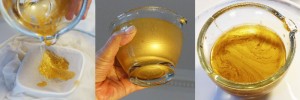Still Life Drawing
We have now developed a vibrant community of interesting and talented individuals around the weekly drawing classes at the studio, composed mainly of professionals from creative industries or academia. Regular attendance is never mandatory because I want to maintain a relaxed atmosphere with the whole thing. Nevertheless a core group is developing, and the dynamics between us as we get to know each other better is stimulating and interesting. There is always room for more people to join, so please see drawing classes for more information about this.
There are many different reasons for wanting to develop one’s drawing skills, but underlying them all is a desire to express oneself more fully, and an unending curiosity about the things one wants to draw. Everyone has their own distinctive ‘handwriting’ and personality which comes through in their preferences for certain techniques over others, the kinds of marks they make and the way the ‘see’ the subjects they draw.
Rapid drawing techniques
My own formative training in drawing came from a masterful draftswoman called Barbara Gomar Stone at Newcastle Polytechnic in the early 1980s. She was near retirement age at that time, and had spent part of her long career as a fashion illustrator in the 1950s – all that fabulous rapid pencil and ink stuff, economical and stylish. Over four years of weekly classes, she imparted some of her elegant precision to us her students, a treasure which I endeavour to pass on to others. Being able to capture a subject with speed and precision is a valuable skill to acquire; exercising this discipline actually helps you to see more efficiently and improves your approach to more meticulous techniques.
Our favorite studio ‘model’ for rapid drawing is Kronk, my taxidermied (road-kill) crow, whom you can see here, posing for us on the table. Amy has made a series of rapid studies of him using brush and sepia with conte-pencil definitions and highlights, below.
Shells and Fossils
We have been drawing from a collection of beautiful natural objects that I have collected over the years.
Shells and fossil ammonites are really fascinating when you examine them closely. They have elegant helical or spiral structures, interesting growth patterns, beautiful surface patterns and iridescent interiors. They are challenging to draw, demanding careful analytical observation. Silverpoint is a particularly suitable medium for drawing shells because of its precision and delicate iridescent quality. I shall offer more on silverpoint in the next post.
Drapery
Drapery is another interesting and classic subject for observational drawing. Apprentice artists of the Renaissance had to make rigorous drawings of drapery as part of their training, and so did generations of art-school students in the nineteenth and twentieth centuries. A common practice was to dip some linen into plaster and then drape it while still wet. When the plaster coating dried, the folds of the drapery were immovably set, allowing students to make careful studies over several sessions.
For our sessions we arrange pieces of silk or linen and use rapid pencil techniques or silverpoint to make our studies. We take photographs of our arrangements so that we can continue working on a drawing after the session. Photographs are great for reference, but it is still important to work directly from the object in front of us, because our stereoscopic eyes and analytical brain can gather a great deal more knowledge about structure and detail than the single eye of a camera.

Analysis of drawing using different grades of pencil
Lighting
Lighting is very important. The studio has a wash of overhead lighting from a series of daylight bulbs, which give ambient light to the subject. Then we cast a strong light onto the composition from one side with an Anglepoise fitted with a regular warm-toned bulb. Side lighting throws the subject into relief with strong areas of light and shade, and emphasises textures. The use of cold and warm lighting together creates interesting cross-overs of shadows on the base and areas of reflected light on the subject. Altogether the lighting helps to create the contrasts and structural definitions that make a drawing lively and exciting.





 "Making Masterpieces for a Prince of the Black Sheep" – my Bodleian Fellowship research blog
"Making Masterpieces for a Prince of the Black Sheep" – my Bodleian Fellowship research blog "The Book of Gold" – Gold pigment tutorial available from my Etsy shop
"The Book of Gold" – Gold pigment tutorial available from my Etsy shop
I used to draw, though it was a few years ago now and i’m very out of practice! I’d like to start again but i’m not sure where to begin! Do you think its a skill you lose if you don’t practice every day?
LikeLike
Hi, thanks for a great question. In my opinion, you can never lose it, because it is hard-wired into you from childhood, and if you continued to draw, then what you gained is still there.
What I show are specific techniques and tricks that have been developing constantly since the Renaissance, when pioneering artists developed ways of creating two-dimensional illusions of three-dimensional space.
You don’t have to draw like that to be creative, but if you want to, it is simply a matter of learning and practicing the techniques. It is a bit like cooking and food-preparation, and I know that you are a master of those skills, so there is no reason why you cannot master any other skills that you choose!
LikeLike
Thank you, this is really inspiring me to sharpen my pencils and get going on some new drawings! The techniques you are teaching and practicing sound fascinating, i only wish i lived in london and could come and have a go!
-E
LikeLike
Thats great!
LikeLike